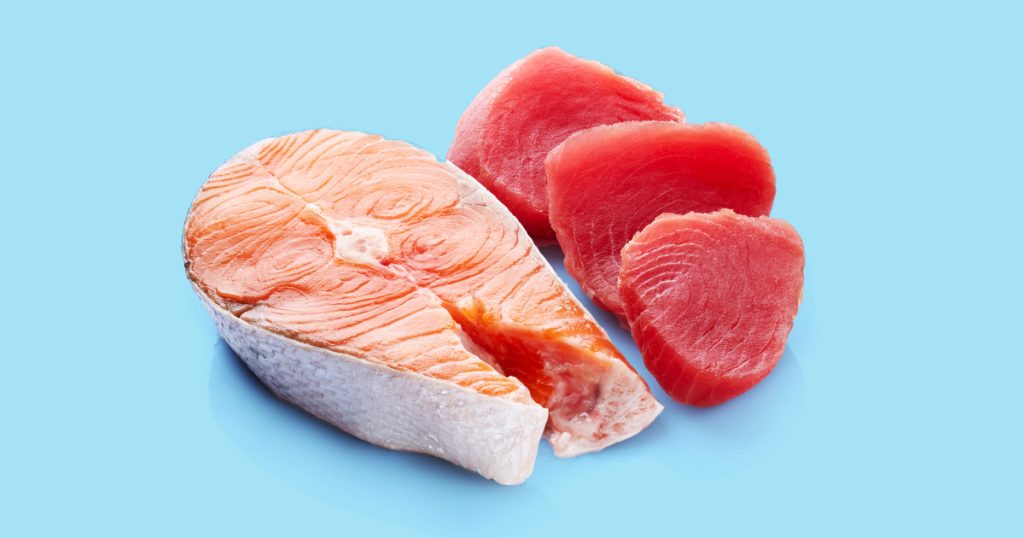Salmon and tuna are nutritious sources of protein that offer various health benefits. The Dietary Guidelines for Americans recommend adults consume at least eight ounces of fish per week. Salmon and tuna are versatile and can be eaten in various ways, including roasted, grilled, raw in sushi, or from a can. Both fish are excellent additions to any diet, but the question remains – which one is healthier?
Salmon, which includes both Pacific and Atlantic species, is high in protein, omega-3 fatty acids, and essential vitamins and minerals. Wild-caught salmon tends to have slightly higher protein and omega-3 content compared to farmed Atlantic salmon. One serving of fresh wild sockeye salmon contains 155 calories, 22 grams of protein, and significant amounts of vitamin B-12, vitamin D, and niacin. Salmon has a mild, buttery flavor and flakes easily when cooked.
Tuna, on the other hand, includes various species such as yellowfin, skipjack, and albacore. Tuna is high in protein, low in calories, and packed with nutrients. One serving of fresh yellowfin tuna provides 110 calories, 25 grams of protein, and significant amounts of selenium, niacin, and vitamin B-6. Tuna has a firm texture and meaty taste, making it a popular choice for many dishes.
When comparing salmon and tuna nutrition, salmon has a higher fat content, making it higher in calories and omega-3 fatty acids. Omega-3 fats are associated with numerous health benefits, including heart and brain health. Wild salmon is rich in omega-3s such as EPA and DPA. On the other hand, tuna is higher in protein and lower in fat and calories. Tuna is a lean source of protein that can help with satiety and muscle repair.
Both salmon and tuna are rich in essential vitamins, minerals, and antioxidants. Salmon is higher in vitamin D and B12, while tuna stands out for its selenium and niacin content. Vitamin D is essential for bone health, muscle function, and the immune system. Selenium is a powerful antioxidant, while niacin helps with energy production and cholesterol levels. Both fish provide important nutrients for overall health.
Mercury content is a consideration when choosing between salmon and tuna. Salmon is low in mercury and considered a safe choice for regular consumption. Tuna, especially larger species like yellowfin and albacore, can contain higher levels of mercury. Pregnant women, breastfeeding mothers, and young children should be cautious of mercury intake and opt for lower mercury fish options.
In conclusion, both salmon and tuna are healthy options with unique benefits. Salmon is better for heart and brain health due to its omega-3 content, while tuna is a lean source of protein ideal for weight management. It is recommended to include a variety of fish in your diet to maximize nutrient intake. Canned salmon and tuna are convenient and affordable options that offer similar benefits to fresh fish. When choosing canned fish, opt for varieties packed in water or olive oil, lower in sodium, and from sustainable sources.


